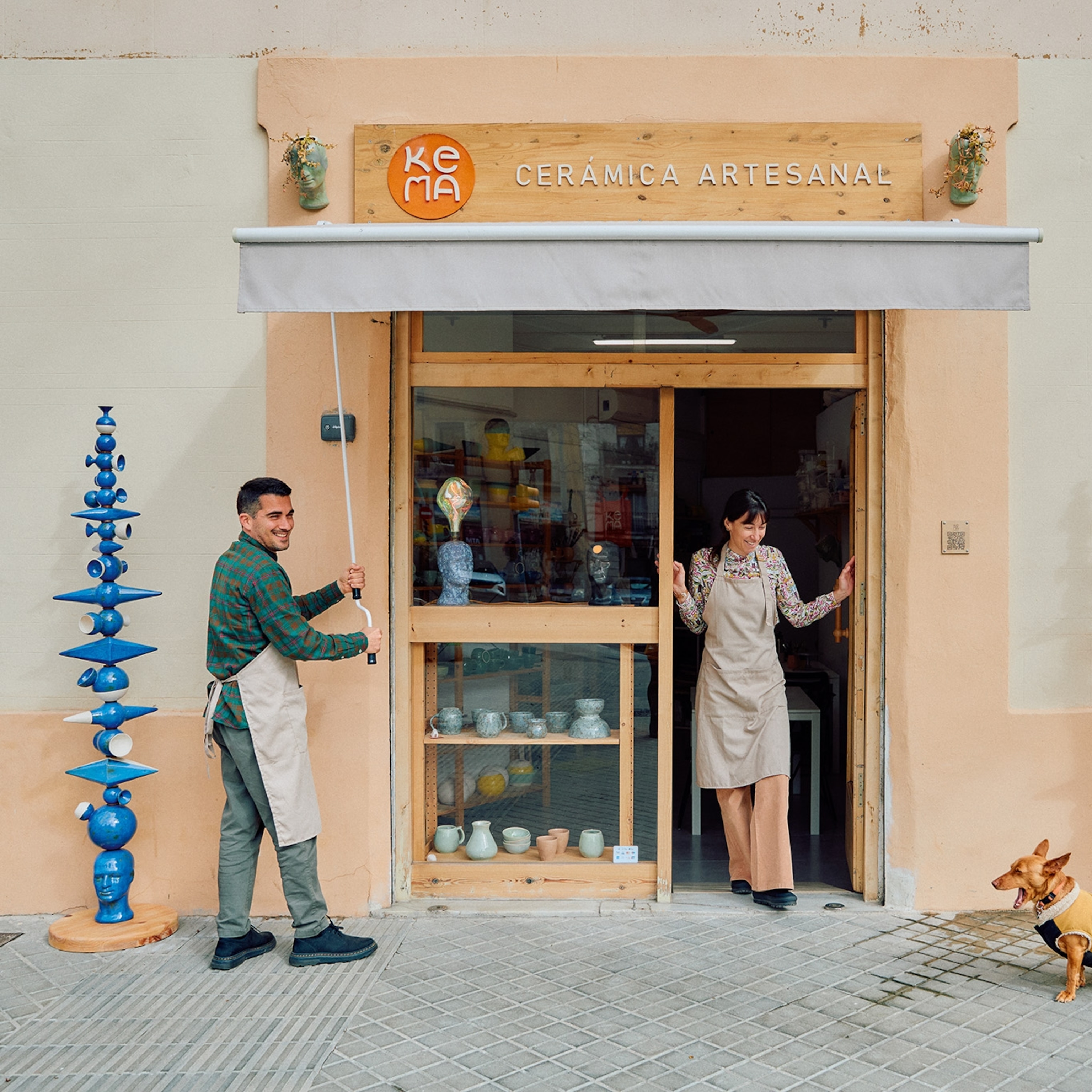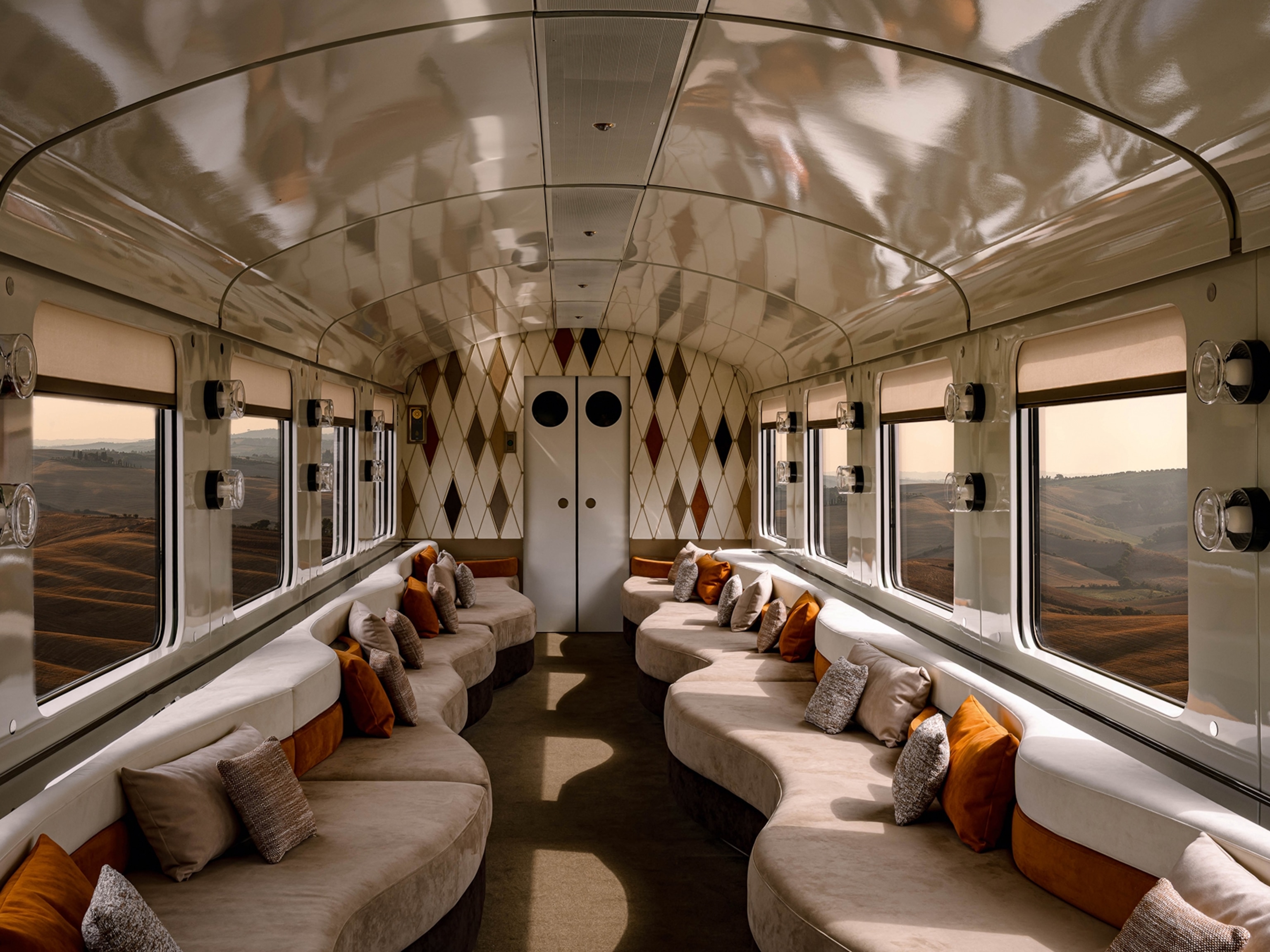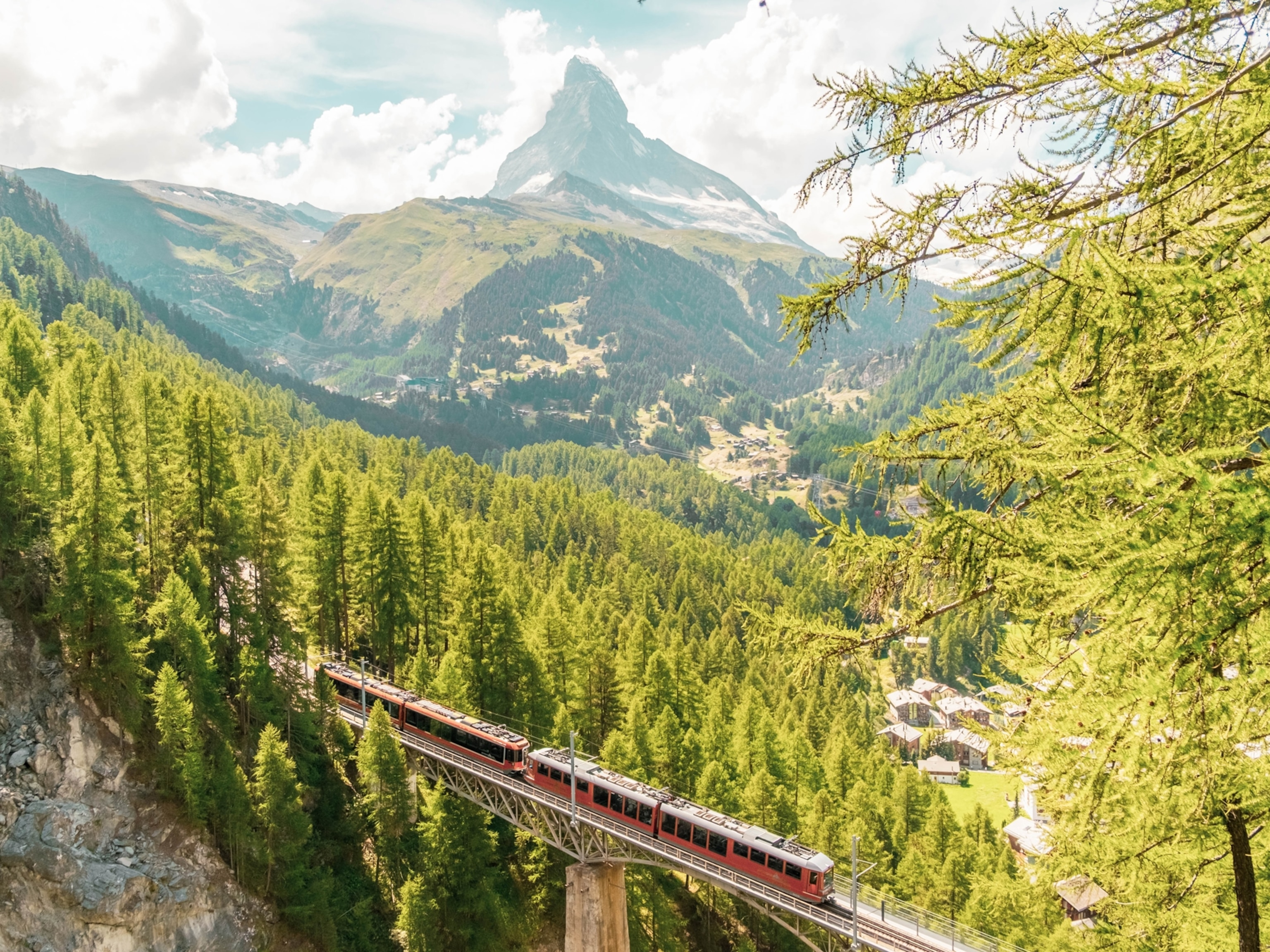
The unlikely rebirth of a London legend
A Victorian train station saved by a poet is the jewel in the crown of this urban renewal.
With its red-brick exterior and soaring clock tower, London’s St. Pancras International train station is hard to miss. The 1860s Victorian Gothic structure is widely considered an architectural masterpiece. But a hundred years after it was built, British Railways wanted to tear it all down and repurpose the land.
Then, a poet with a love of Victorian architecture stepped in.
Sir John Betjeman, who later became one of the United Kingdom’s most popular poets laureate, successfully led a campaign to save St. Pancras, planting the seed for a world-class train station that would form the beating heart of a flourishing neighborhood.
Today, on the station’s mezzanine, away from the hordes of travelers waiting for trains to Loughborough and Luton—or Eurostar trains to Paris and Amsterdam—stands a statue of Betjeman, holding his hat and gazing up at the spectacular vaulted ceiling. Around his feet are inscribed the words “Who saved this glorious station.”
Love London? Check out this ultimate guide to England’s capital city.
From coal to conservation
Betjeman’s spirit lives on in this part of postcode N1, where all around a blur of construction is transforming this hub of transportation into a destination itself.
In the area between St. Pancras and King’s Cross stations, industrial elements shape-shift into cafes, shops, and luxury apartments. Across Regent’s Canal in Granary Square, converted grain stores opened their doors as restaurants and bars in 2012.
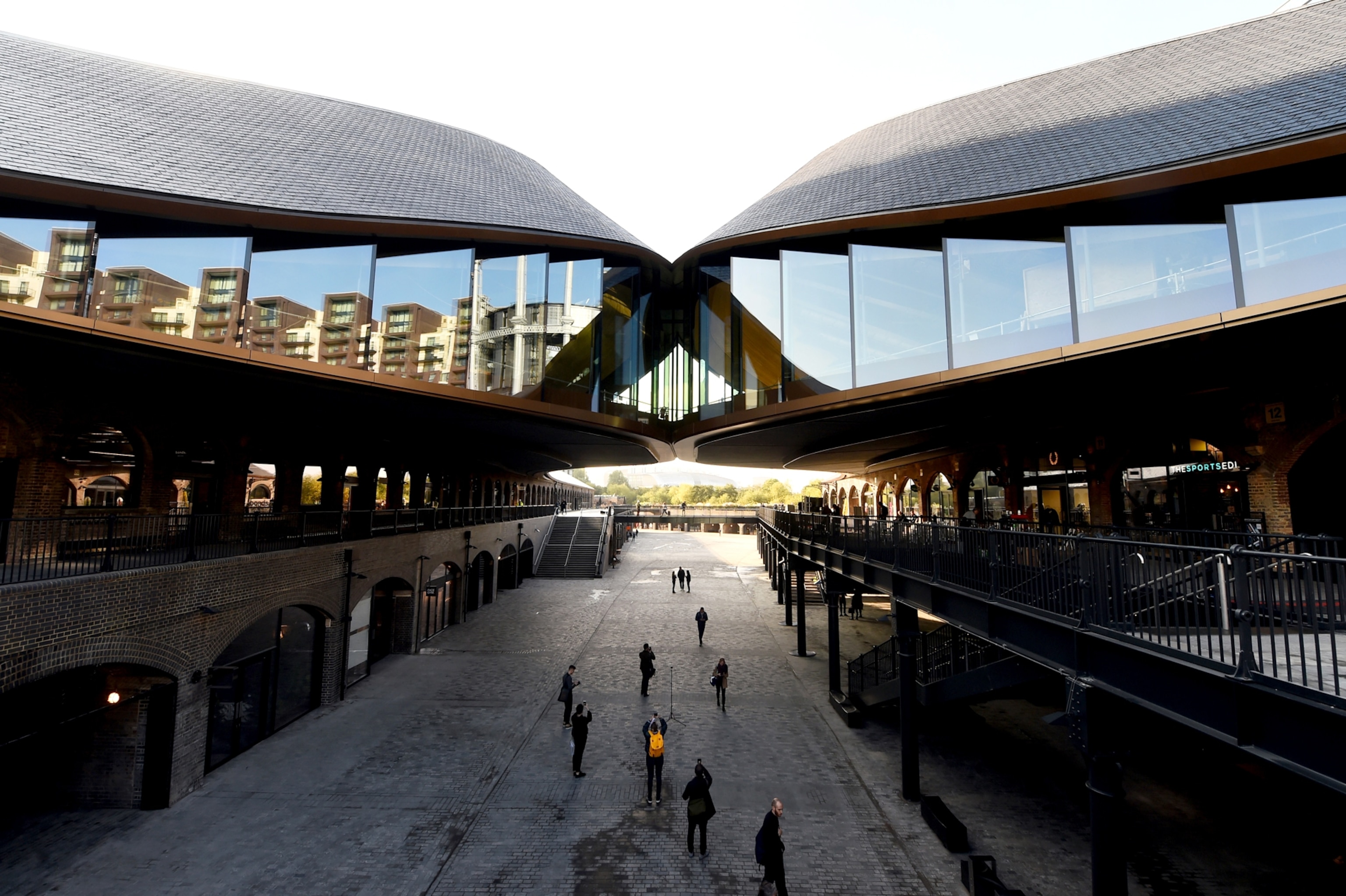
More recently, neighboring Coal Drops Yard began its own new chapter in 2018. The collection of old warehouses and viaducts takes its name from their original design and purpose—an elevated railway for unloading hoppers of coal—which, by the 1980s was obsolete. Instead, the buildings were serving as the site for illegal raves before they later morphed into landmark nightclubs The Cross, The Key, and Bagley’s (later Canvas).
With the sunshine glinting above them, the curved roofs of Coal Drops Yard’s twin buildings now resemble a pair of wings; an organic shape amid a sea of industrial angles. Underneath is a mix of designer chains and upmarket restaurants, with some smaller brands too.
In a carriage house-like space along the side of one of the buildings, punctuated by potted plants and a mishmash of furniture, coffee lovers order flat whites at Redemption Roasters. The beans here are roasted at HM Prison Aylesbury, where inmates are also trained to be baristas.
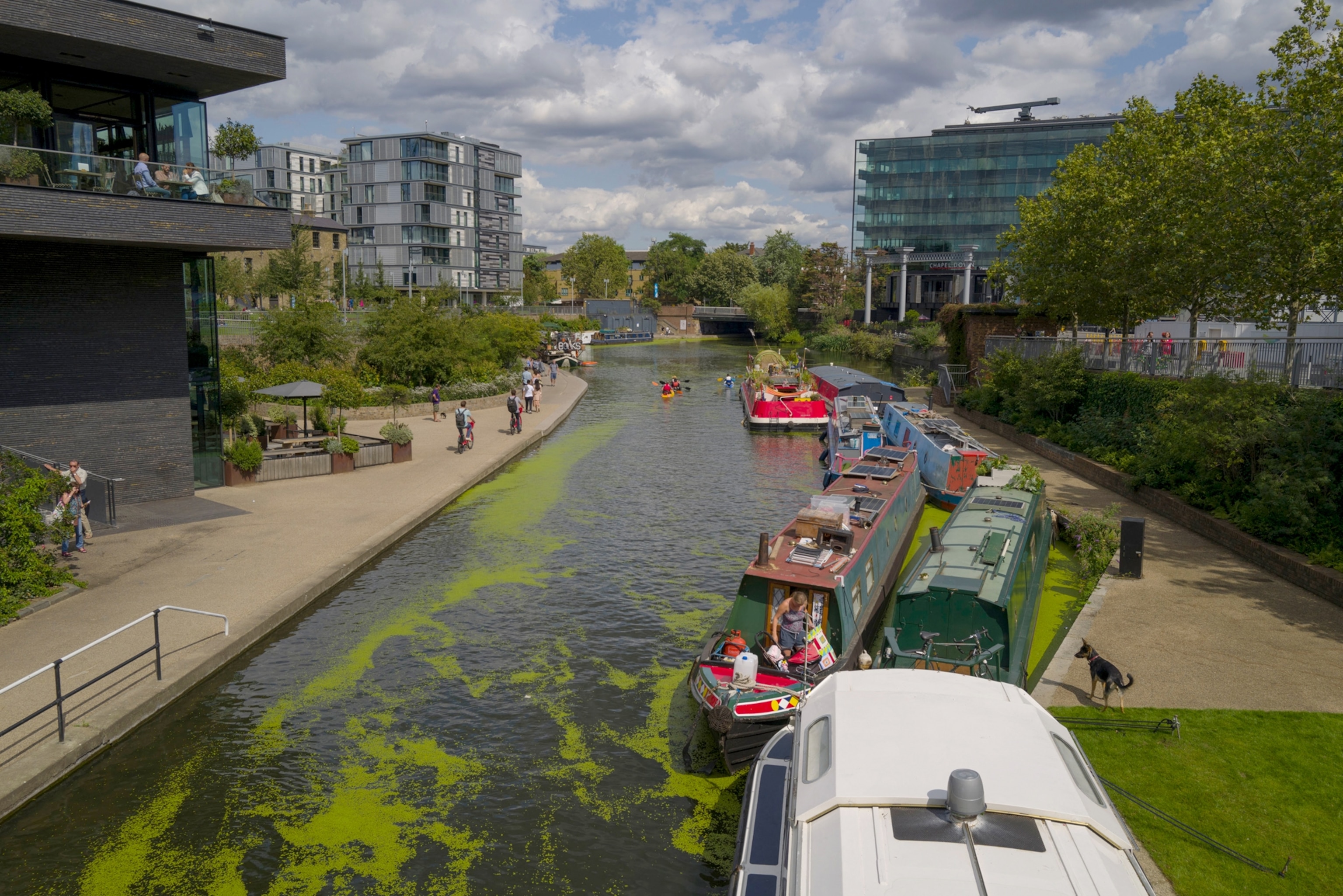
Nearby, the sound of soul music drifts out of Honest Jon’s, an offshoot of the legendary record shop that’s stood in the same Portobello Road location for 45 years.
Along the canal towpath, a trio of Victorian-era gas storage tanks has been repurposed as luxury apartments, their florid cast iron frames encircling the cylindrical edifices within.
On the southern banks of the canal lies Camley Street Natural Park—two acres of woodland, meadows, and wetland. It, too, was once a coal drop, reclaimed by nature when it fell out of use; overgrown, it became a haven for wildlife.
Learn how London is pledging to be greener, healthier, and wilder.
When there was talk of the site being redeveloped, the London Wildlife Trust successfully campaigned to turn it into a nature reserve—a “green oasis in the middle of a concrete jungle,” as manager Karolina Leszczynska-Gogol puts it. The park reopens in spring 2020 with a new visitor and learning center.
Red-light legends reinvented
For all the smart new bars and restaurants, there are still a few proper old-school pubs, such as The Scottish Stores, whose overtly contemporary signage does it a disservice. Inside, you’ll find the Platonic ideal of a pub. There’s wood paneling and William Morris wallpaper; real ale and jars of nuts.
“You see those? They’re original,” says Gerard Oliver, a cheery South African who’s managed the pub since 2018. He’s pointing to a series of cartoon-like drawings of huntsmen and beagles, inset into the wood and preserved behind glass. Before the current owners took over the pub, these illustrations were lost behind layers of grime and cheap paint.

The Scottish Stores was originally an inn, offering rooms to traders—many of them Scots who’d come to King’s Cross by train—but it gained a reputation as a rather insalubrious hangout for sex workers and criminals and was notorious for bar brawls. In the 1980s, at the height of the neighborhood’s red-light infamy, it became a strip bar.
“It was grimy and dark, the windows were blacked out, and the wood was nicotine-stained,” Oliver tells me. “I came in once back then, and I remember thinking ‘this place has so much potential.’” Eventually, the pub’s current owners spotted that potential too, restoring and reopening the place in 2015.
Characterizing the area’s recent history as a phoenix-like rise from squalor to respectability doesn’t tell the whole story. Alongside the prostitution, drug abuse, and illicit nightlife, the post-industrial enclave provided workspaces for artists.
“It was pretty ropey, but of course studio space was cheap,” says visual artist Michael Pinsky, who’s lived and worked in the area since 1996. “The Cubitt studio complex—before it moved to [nearby] Angel—had a community that included Turner Prize winners. It really was quite high-level,” he says.
Pinsky’s view of those days, however, certainly isn’t rose-tinted. “I prefer it the way it is now,” he says. “The King’s Cross development is quite upmarket, but that being said, the area where I live—between Caledonian Road and York Way—is still quite run down, given how central it is. It’s not completely turned around yet. But it will be in another 10 years or so.”
- National Geographic Expeditions

